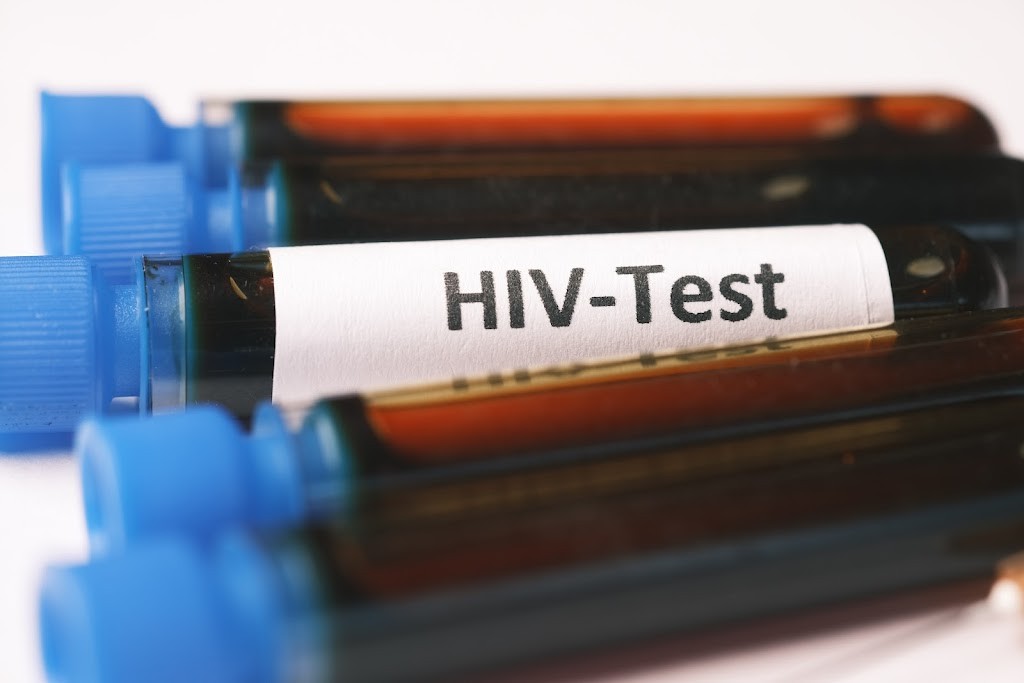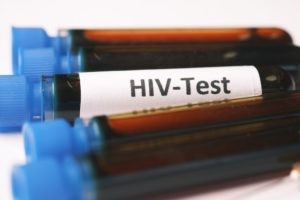HIV/AIDS remains a significant global health concern, affecting millions
of lives worldwide. To promote understanding and dispel misconceptions,
this blog explores the full aspects of HIV/AIDS. From
transmission to prevention, it equips readers with essential knowledge
and empowers them to make informed decisions about their sexual health.
* Understanding HIV/AIDS
Understanding HIV/AIDS entails having comprehensive knowledge about the virus, its transmission, progression, and impact on individuals and communities. Here are some key aspects to consider:
Human Immunodeficiency Virus (HIV):
HIV is a virus that attacks the immune system, specifically targeting CD4 cells, which play a crucial role in fighting infections. If left untreated, HIV can lead to the development of Acquired Immunodeficiency Syndrome (AIDS).
Transmission:
HIV can be transmitted through unprotected sexual intercourse (vaginal, anal, or oral), sharing contaminated needles or syringes, and from an infected mother to her child during childbirth or breastfeeding. It is important to note that HIV is not transmitted through casual contact, such as hugging, shaking hands, or sharing utensils.
Progression:
HIV infection occurs in stages. After initial exposure, there is an acute stage characterized by flu-like symptoms. If left undiagnosed and untreated, the virus progresses to the chronic stage, leading to a decline in the immune system’s function. This can result in opportunistic infections and other complications, ultimately leading to AIDS.
Symptoms and Testing:
HIV symptoms vary among individuals and can include fever, fatigue, swollen lymph nodes, and recurrent infections. However, it is crucial to remember that some people may remain asymptomatic for years. HIV testing, which involves a blood test or oral swab, is the only way to confirm infection. Early diagnosis allows for timely medical intervention and appropriate treatment.
Treatment and Management:
Antiretroviral therapy (ART) is the standard treatment for HIV/AIDS. ART helps control the virus, suppresses viral replication, and preserves immune function. It is essential to adhere to the prescribed treatment regimen to achieve optimal health outcomes. With proper treatment and care, people living with HIV can lead long and healthy lives.
Prevention:
Prevention strategies are crucial in halting the spread of HIV. Promoting safe sexual practices, such as using condoms consistently and correctly, and reducing the number of sexual partners, can significantly lower the risk of transmission. Harm reduction programs, such as providing clean needles and syringes, are essential for preventing HIV transmission among people who inject drugs. Pre-exposure prophylaxis (PrEP) is also available for individuals at high risk of contracting HIV.
Stigma and Discrimination:
HIV/AIDS has been associated with stigma, discrimination, and social marginalization. Overcoming stigma requires education, awareness, and fostering an inclusive and supportive environment for people living with HIV/AIDS. Everyone deserves compassion, respect, and access to healthcare services without fear of judgment or discrimination.
Understanding HIV/AIDS empowers individuals to make informed decisions about their sexual health, promotes prevention, and fosters empathy and support for those affected by the virus. By dispelling myths and misconceptions, we can collectively work towards eliminating HIV/AIDS as a global health burden.
* HIV/AIDS Prevention and Protection
HIV/AIDS prevention and protection refer to the strategies and practices aimed at reducing the transmission of HIV and minimizing the risk of acquiring the virus. Here are some key aspects of HIV/AIDS prevention and protection:
Safe Sexual Practices:
Consistently and correctly using condoms during sexual intercourse is a crucial method of preventing the sexual transmission of HIV. It is essential to use condoms from start to finish, regardless of the type of sexual activity (vaginal, anal, or oral). Open and honest communication with sexual partners about HIV status and sexual health is also important.
Testing and Early Diagnosis:
Regular HIV testing is vital for individuals to know their HIV status. Early diagnosis allows for timely access to treatment and care, reducing the risk of transmission to others. Everyone should consider getting tested at least once in their lifetime, and more frequently if engaged in high-risk behaviors.
Pre-Exposure Prophylaxis (PrEP):
PrEP involves the use of antiretroviral medication by individuals who are at high risk of acquiring HIV. When taken consistently, PrEP can significantly reduce the risk of HIV transmission. It is essential to consult healthcare professionals to determine if PrEP is suitable and to follow the prescribed regimen.
Post-Exposure Prophylaxis (PEP):
PEP involves the use of antiretroviral medication after potential exposure to HIV. It is recommended for individuals who may have been exposed to HIV through unprotected sexual intercourse, sharing needles, or occupational exposure (e.g., healthcare workers). PEP should be initiated as soon as possible, ideally within 72 hours, but can still be effective if started within 72-120 hours after exposure.
Harm Reduction Programs:
Harm reduction initiatives aim to reduce the risks associated with drug use, including injecting drugs. These programs provide access to sterile needles and syringes, as well as education on safe injection practices. By reducing the sharing of contaminated needles, harm reduction programs play a crucial role in preventing HIV transmission among people who inject drugs.
Prevention of Mother-to-Child Transmission (PMTCT):
Pregnant individuals living with HIV can transmit the virus to their infants during childbirth or through breastfeeding. However, with proper medical care and interventions, the risk of mother-to-child transmission can be significantly reduced. PMTCT strategies include antiretroviral medication for the mother during pregnancy, labor, and breastfeeding, as well as providing safe alternatives to breastfeeding in certain circumstances.
Education and Awareness:
Promoting comprehensive education and raising awareness about HIV/AIDS play key roles in prevention efforts. This includes disseminating accurate information about transmission, prevention methods, and debunking myths and misconceptions. Education should target all populations, including young people, high-risk groups, and communities disproportionately affected by HIV/AIDS.
By adopting a combination of prevention methods, practicing safe behaviors, and promoting awareness, individuals and communities can reduce the incidence of HIV/AIDS and protect themselves and others from the virus. Prevention and protection efforts should be combined with supportive environments, access to healthcare, and the reduction of stigma and discrimination associated with HIV/AIDS.
* HIV/AIDS Addressing Misconceptions
Addressing misconceptions about HIV/AIDS is crucial in combating stigma, discrimination, and promoting accurate understanding of the virus. Here are some common misconceptions and the corresponding facts to address them:
Misconception:
HIV/AIDS can be transmitted through casual contact.
Fact: HIV is not transmitted through hugging, shaking hands, sharing utensils, or casual contact. It is primarily transmitted through specific routes, such as unprotected sexual intercourse, sharing contaminated needles, or mother-to-child transmission during childbirth or breastfeeding.Misconception:
HIV/AIDS only affects specific groups or communities.
Fact: HIV can affect anyone, regardless of their gender, sexual orientation, or socioeconomic status. It is a global health issue that affects individuals from diverse backgrounds.Misconception:
HIV-positive individuals are incapable of leading fulfilling lives.
Fact: With access to appropriate medical care, treatment, and support, people living with HIV can lead healthy and fulfilling lives. Antiretroviral therapy (ART) helps manage the virus, allowing individuals to maintain their health, pursue personal goals, and have meaningful relationships.Misconception:
HIV can be cured by alternative therapies or natural remedies.
Fact: Currently, there is no cure for HIV/AIDS. Antiretroviral therapy (ART) is the standard treatment to manage the virus and maintain the health of individuals living with HIV. Alternative therapies or natural remedies should not replace medically approved treatments.Misconception:
HIV/AIDS is solely a sexual health issue.
Fact: While sexual transmission is a primary mode of HIV transmission, it is important to recognize that HIV can also be transmitted through sharing contaminated needles or syringes for drug use. Addressing HIV/AIDS requires a comprehensive approach that includes sexual health education, harm reduction strategies, and access to healthcare for all individuals.Misconception:
People living with HIV/AIDS are a danger to others.
Fact: People living with HIV who are on effective treatment and have an undetectable viral load cannot transmit the virus to sexual partners. This concept is known as U=U (Undetectable = Untransmittable). With proper management, individuals with HIV can engage in healthy relationships without the risk of transmission.Misconception:
HIV/AIDS is a death sentence.
Fact: While HIV/AIDS is a serious health condition, advancements in medical treatments, including antiretroviral therapy (ART), have transformed HIV into a manageable chronic illness. Early diagnosis, access to healthcare, and adherence to treatment can significantly improve outcomes and life expectancy.
Addressing these misconceptions requires education, raising awareness, and promoting accurate information about HIV/AIDS. By dispelling myths and providing factual knowledge, we can reduce stigma, create supportive environments, and foster empathy and understanding for individuals living with HIV/AIDS.
* Global Impact and Awareness
Global Impact and Awareness refers to the widespread effects of HIV/AIDS on a global scale and the efforts undertaken to increase understanding, knowledge, and consciousness about the virus. Here are key aspects of the global impact of HIV/AIDS and the importance of raising awareness:
Prevalence and Burden:
HIV/AIDS continues to be a significant global health challenge. It affects millions of individuals worldwide, with a disproportionate impact on certain regions, communities, and vulnerable populations. Understanding the magnitude of the epidemic is crucial in mobilizing resources, advocating for effective policies, and providing adequate support and care to affected populations.
Socioeconomic Impact:
HIV/AIDS has far-reaching consequences on social, economic, and developmental aspects. The virus disproportionately affects communities already burdened by poverty, inequality, and limited access to healthcare. The loss of productive members of society, caregivers, and parents due to HIV-related illnesses has profound social and economic implications for families and societies at large.
Healthcare Systems:
The HIV/AIDS epidemic places significant strain on healthcare systems, particularly in resource-limited settings. Adequate funding, infrastructure, and trained healthcare professionals are essential to provide comprehensive prevention, testing, treatment, and care services. Addressing the global impact of HIV/AIDS necessitates strengthening healthcare systems to ensure universal access to quality services.
Global Response:
The global community has responded to the HIV/AIDS epidemic with international initiatives, such as the Joint United Nations Programme on HIV/AIDS (UNAIDS) and the Global Fund to Fight AIDS, Tuberculosis, and Malaria. These initiatives aim to coordinate efforts, mobilize resources, and support countries in their response to HIV/AIDS. Collaboration among governments, civil society organizations, researchers, and healthcare providers is vital for a comprehensive and effective response.
Awareness and Education:
Increasing awareness and knowledge about HIV/AIDS is crucial in preventing new infections, dispelling myths, reducing stigma and discrimination, and promoting healthy behaviors. Awareness campaigns, educational programs, and community engagement initiatives play a pivotal role in empowering individuals to protect themselves, get tested, access treatment, and provide support to those affected by HIV/AIDS.
Advocacy and Policy:
Advocacy efforts are essential in shaping policies, promoting human rights, and addressing the social and structural factors that contribute to the spread of HIV/AIDS. Advocates work to ensure equitable access to prevention methods, treatment, care, and support services. They also challenge stigma and discrimination, advocate for the rights of key affected populations, and promote policies that prioritize HIV/AIDS within the broader public health agenda.
Research and Innovation:
Ongoing research and innovation are critical in advancing our understanding of HIV/AIDS, developing more effective prevention methods, treatment options, and potential cures. Investment in scientific research and development drives progress in combating the epidemic and improving the lives of individuals living with HIV/AIDS.
Global impact and awareness of HIV/AIDS are interconnected. By raising awareness, supporting evidence-based policies, and fostering international collaboration, we can work towards reducing new infections, improving access to treatment and care, and ultimately achieving the goal of an AIDS-free generation.
Conclusion :
By gaining accurate knowledge about HIV/AIDS, we can dispel
misconceptions, reduce stigma, and promote a safer and healthier world.
Remember, prevention is crucial, and regular testing is essential for
early detection. Empathy, understanding, and support are essential in
ensuring that people living with HIV/AIDS lead lives free from
discrimination. Let us join hands in spreading awareness, addressing the
challenges, and working towards an HIV/AIDS-free future for all.






